The Employment Situation in May
Today’s jobs report shows that the economy added 390,000 jobs in May, for an average monthly gain of 408,000 over the past three months. The number of jobs added in May came in above market expectations. Employment in March and April was revised down by 22,000 jobs.
The unemployment rate held steady at 3.6 percent. The labor force participation rate ticked up to 62.3 percent, reflecting strong growth over the year. Nominal wages have risen by 5.2 percent over the last year, a robust pace but a slight slowdown from the pace in March and April.
- Average monthly job growth over the last three months was 408,000, a fast pace, but a slowdown from the average in recent months.
Job growth in March, April, and May averaged 408,000 jobs per month (see Figure 1). Since monthly numbers can be volatile and subject to revision, the Council of Economic Advisers prefers to focus on the three-month average rather than the data in a single month, as described in a prior CEA blog.
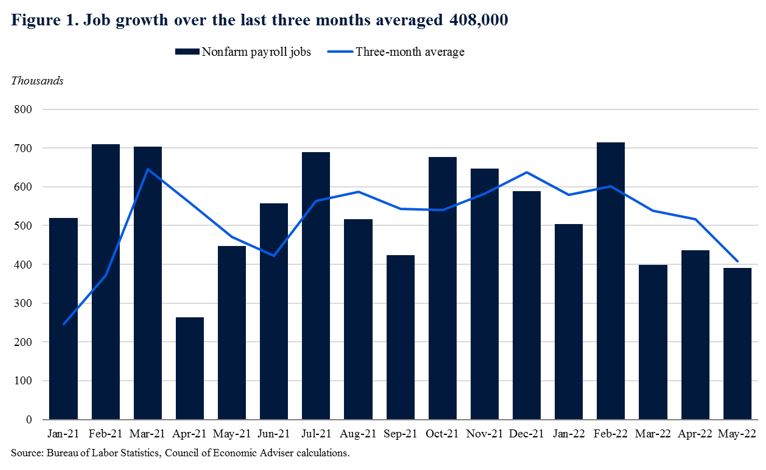
2. During the pandemic recovery, the labor market has seen extraordinary job growth. As the recovery continues, monthly job growth will likely slow.
So far in 2022, job growth has averaged 488,000 jobs per month. In contrast, from 2011 to 2019, job growth averaged about 194,000 jobs per month. Overall, the recovery from the pandemic recession has been much faster than after past recessions.
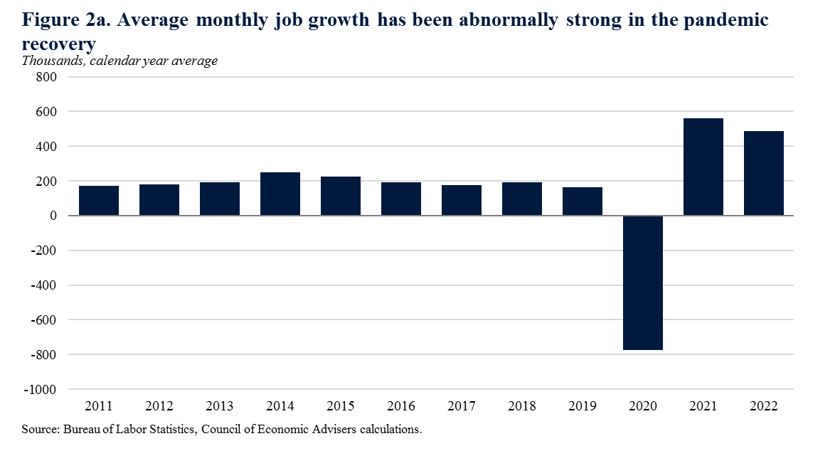
While it is unclear when the pace of job growth will reach a longer-term sustainable rate, it will likely continue to slow in the months to come. Indeed, during the later years of the recovery from the Great Recession, job growth was faster when the unemployment rate was higher. (As the jobless rate falls and the labor market closes in on full employment, the number of available workers begins to decline.) In 2019 alone, for example, the unemployment rate averaged 3.7 percent—slightly above where it was in May 2022—and payroll growth averaged 164,000.
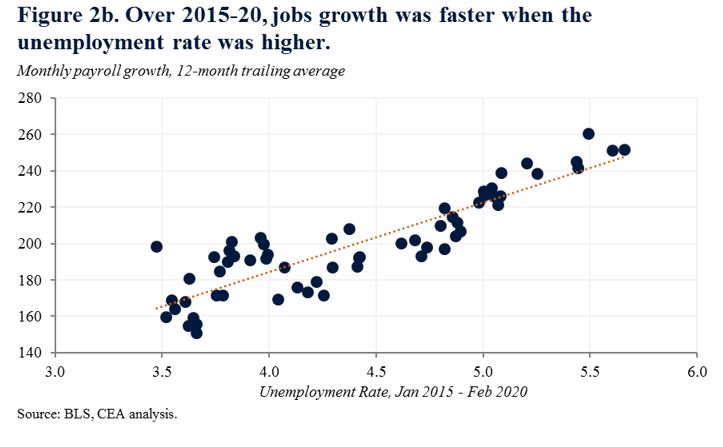
3. While employment in local government education has continued to lag, employment in State government education fully recovered in May.
Education employment has lagged other industries in its recovery during the pandemic. However, as of May, employment has fully recovered in State government education (which is mostly public colleges and universities) and is now above its pre-pandemic level. Employment in private educational services is almost fully recovered and is only 0.02 percent below its pre-pandemic level.
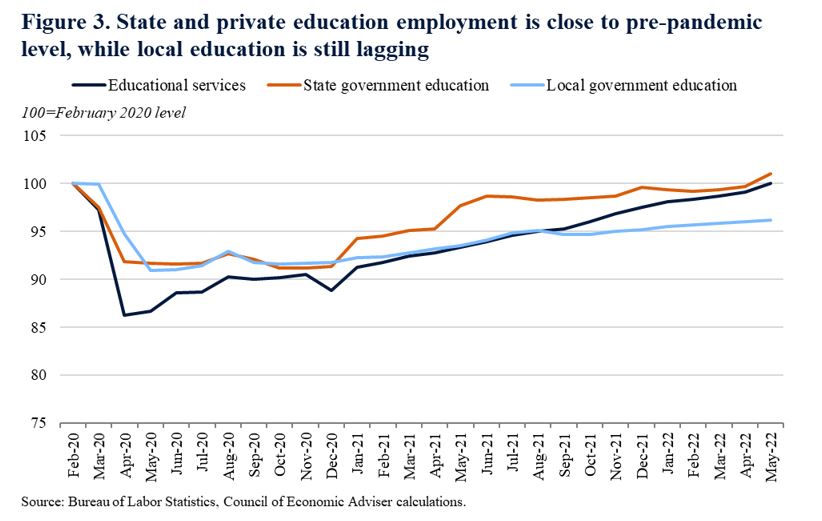
In contrast, employment in local government education (which is mostly K-12 employment), has lagged behind in the recovery, despite seeing a similar drop as State government education in 2020. It is still 3.8 percent below its February 2020 level. That being said, over the last 12 months, job growth in local government education has averaged 18,000 per month, more than three times what it was in the 12 months pre-pandemic.
4. The labor force participation rate improved in May both for overall and 25-54 year olds and is up strongly over the year.
Labor force participation ticked up to 62.3 percent in May and prime-age (25 to 54) labor force participation rose to a new pandemic-recovery high of 82.6 percent. Prime-age labor force participation has risen by 1.2 percentage point over the past year, a fast pace. Prior to the pandemic, the last time prime-age labor force participation had risen that quickly in a 12-month period was 1985.
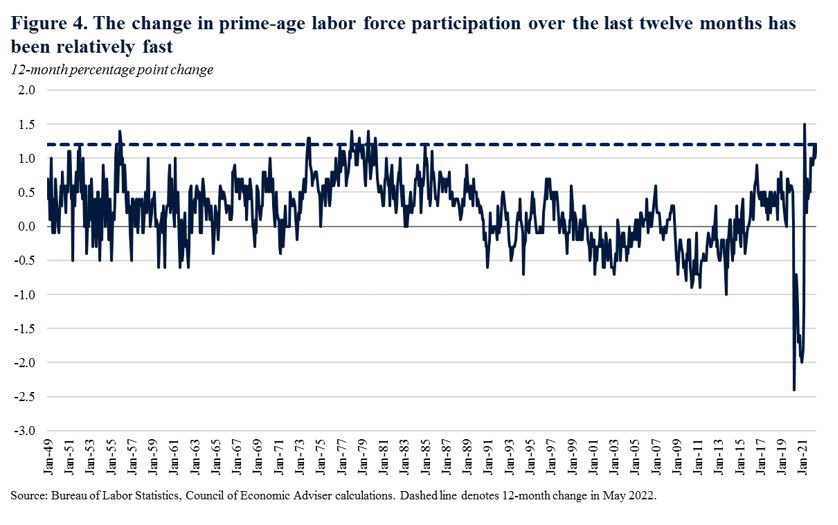
5. Wage growth held steady at 0.3 percent in May, slower than the general rates seen in recent months.
Wages grew by 0.3 percent in May, the same pace as in April and a moderation from the general rate seen in previous months. Overall, wage growth has been lower in recent months than it was at the end of 2021.

6. Unemployment for both veterans and nonveterans has fallen over the last year.
This week marked Memorial Day, the day we honor those who have worn the uniform of the United States armed forces. Over the last twelve months, the unemployment rate for veterans declined by 1.5 percentage point, smaller than the decline for nonveterans but still a solid decrease.

As the Administration stresses every month, the monthly employment and unemployment figures can be volatile, and payroll employment estimates can be subject to substantial revision. Therefore, it is important not to read too much into any one monthly report, and it is informative to consider each report in the context of other data as they become available.

